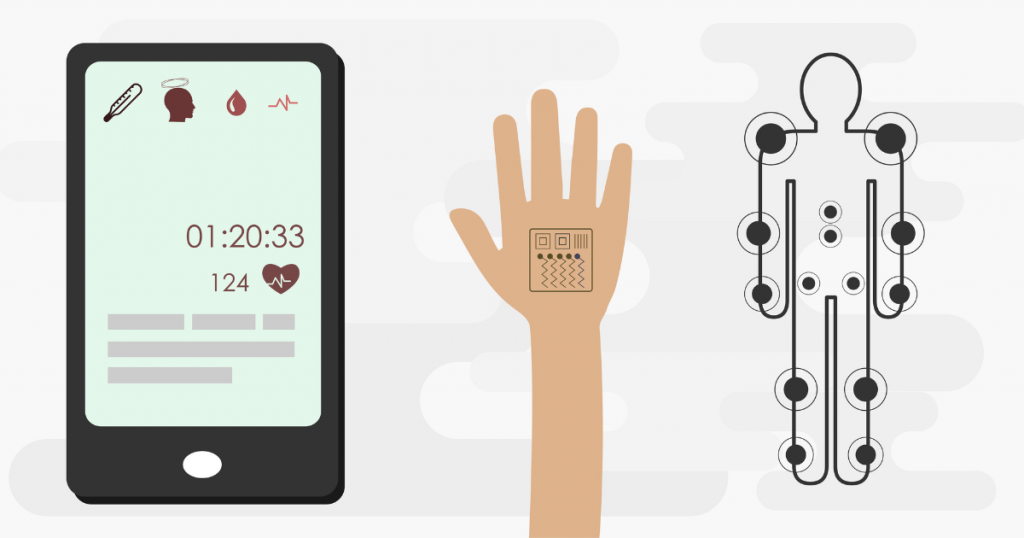The accelerated growth is anticipated due to concurrent reasons such as rising demand of devices because of global pandemic, rising prevalence of chronic diseases, and elderly population which is expected to grow by 41% in 2031 compared to 2021.
The medical devices segment is diverse, creative, and dynamic sector that includes a wide range of products such as implants, surgical instruments, medical equipment, In-vitro diagnostic reagents, and consumables. It is an essential part of the healthcare system for diagnosis, treatment, and prevention of health issues. The Indian medical devices market is currently estimated to be $11 bn, with global market share of nearly 1.5%. India is Asia’s 4th biggest market and ranks in top 20 global medical devices markets. It is reported that the Indian medical devices sector is at its nascent stage and import centric, around 80% of medical devices are imported to meet the domestic requirements, majority of them come from the US, China, and Germany.
Despite high import dependency, the Indian medical devices sector is expected to grow at 7 % CAGR during 2021 to 2025 and is projected to observe the rapid growth in the Asia Pacific market. The accelerated growth is anticipated due to concurrent reasons such as rising demand of devices because of global pandemic, rising prevalence of chronic diseases, and elderly population which is expected to grow by 41% in 2031 compared to 2021. To reduce the import dependency and satisfy the rising demand of medical devices, a comprehensive, and carefully devised strategy is required, which shall assist in achieving the fundamental objectives such as accessibility, affordability, quality, in-house manufacturing and skilled manpower.
The need for contemporary healthcare infrastructure is essential, which may also attract the domestic manufactures to invest in medical devices sectors.
The various government initiatives
Although 100 percent FDI through automatic route in medical devices was allowed in 2014, tangible attention of policy makers and bureaucrats appeared only in the last two or three years during and post-pandemic. To strengthen the medical devices sector, the government provided financial support of 25 crore to Andhra Pradesh MedTech Zone (AMTZ) for a common facility centre. Subsequently, to improve manufacturing in cancer/radiotherapy, imaging devices, renal and cardio-respiratory devices and implants sectors, the production linked incentives scheme for medical devices was initiated in 2020, with an amount of 3,420 crore. Further, the medical devices parks were envisaged by allocating 400 crores for developing the medical devices, research facilities and skilled manpower. By introduction of the medical devices rule 2017, which categories the medical devices in four classes, the quality and efficacy was inducted in this sector.
Moreover, the national pharmaceutical pricing authority swung in action for price capping of knee implant, stents, oxygen concentrator and point of care devices (POC) to reduce the dealer’s margin. To address the rising price of drugs, the government opened 8604 affordable outlets (Jan Aushadhi Kendras) which offer 1451 drugs and 240 types of surgical supplies. Another step towards Universal Health Coverage (UHC), The initiative of the Ayushman Bharat-Pradhan Mantri Jan Arogya Yojana (AB-PMJAY) was pioneered by providing the health insurance of ₹ 5 lakhs per family per year, which covers approximately 50 crore Indian poor and vulnerable families. The forenamed initiatives deserve the praise for notable work by the government, but there is still a necessity to advance medical devices sectors to achieve the vision of affordable and quality care to every stratum of the society.
The further boost in creating centres of excellence at reputed institutes would attract world class faculties to engage them in medical devices which are fit for India.
Areas of improvement and suggestions

Despite various schemes initiated by the government, there is a necessity for a comprehensive and clear roadmap for accelerated and continuous growth in the sector. The urge for improvements in the sector is further stressed by the diversity in the medical devices product segment which demands the wide range of interventions in different areas as underscored below.
Medical devices regulation: The single window online portal for efficient management of information associated with medical devices is essential. The online portal should allow ease in medical device registration, obtaining import and manufacturing licensing, clearance for clinical investigation to all the stakeholders like Co-WIN portal used for vaccination drive.
Research and Development (R & D) funding: The allocation of dedicated funds to encourage joint research with industry, academic and start-ups is much entailed. The fund should be disbursed for building contemporary laboratories for various evaluations, implant and instruments testing, animal studies, equipment testing etc. for R & D activities. These well-equipped laboratories could lead to enhanced research-oriented collaboration, partnerships and innovation in the domestic medical devices sector.
Price regulation of medical devices: The projected Indian annual per capita income in 2022 is ₹ 1,78,944 ($2,357.643) which translates to ₹14,912 per month. The per month income for quality health services to common people is surely less, thus price regulation of medical devices and hospital charges could play an important role in offering affordable medical devices to all. However, careful understanding of medical devices and well devised strategy for price regulation will be required to maintain stability in the medical devices segment.
Healthcare Infrastructure: The highly infectious COVID-19 virus has created panic in the healthcare community and its deleterious episodes are continuing. On other hand it has emphasised the need for infrastructure requirements. The various media reports stressed the shortage of beds in health care centres, which left patients unattended for a long time. This insinuated the need for a good physical foundation for health services and healthcare research for better management and treatment of diseases. Thus, the need for contemporary healthcare infrastructure is essential, which may also attract the domestic manufactures to invest in medical devices sectors.
Promoting the collaboration: The idea of industrial cluster near to all academic Institutions, could provide the essential environment for industrial collaboration, The global giant in medical devices technology such as Medtronic, Stryker, GE Healthcare, Philips, and Medtronic shall be encircled in this type of collaboration, it can be easily done since most of them already have centres in India. The triple helix model, commonly used in western countries, shall be tried in this collaboration initiative, where government, industry and Institutes would interact for improvement in the domestic medical devices segment.
Innovation parks: The promotion of the ecosystem that houses the network of institutions, start-ups, clinical setting, funding agencies is much needed. This type of ecosystem is called innovation parks; the medical devices parks should be initiated to provide the impetus to scale up the production, encourage the research to market translation and quality medical devices. These parks shall further have strong association with the Ministry of Human Resource Development to make necessary corrections in National Education Policy 2022, by designing proper course work to meet the domestic medical device industry requirements.
Creating centres of excellence: The further boost in creating centres of excellence at reputed institutes would attract world class faculties to engage them in medical devices which are fit for India. These centres shall be further strengthened to drive the role in product development, validation, certification, promote the safety and efficacy and use of latest technology such as Internet of Things (IoT), Robotics, Telemedicine, Artificial Intelligence (AI) etc. in the medical devices sector.
Trained Human Resource: As pre survey from AMTZ the half of the workforce in the medical devices sector are unskilled, signaling the need for skill development programs in this sector. The National Institutes for medical devices like IITs, NITs and IISc could be envisaged. These institutes shall provide training, internship, and hands -on experience in medical devices. Further, association with private players shall be encouraged for research and training funding. The course curriculum in these Institutes shall be drafted such that it brings doctors, technicians, service engineering, scientists, and engineers together like Clinical Engineering, a joint initiative by three Institutions namely IIT Madras, SCTIMST and CMC Vellore to improve the skills in the domain.
IP (intellectual property): Patenting is the formal way to protect innovative ideas. Intellectual property right offers various advantages such as, competitive advantages against the established competitors, prevents ideas from theft, and signals to investors about the new technology. Patenting in the Indian medical devices sector shall be encouraged for continuous and stable growth in the sector.
Custom Duty: It is a long pending request from the Indian Medical devices industry to increase the custom duty on imported medical devices. The demand is to increase the custom duty from 0 to 7.5 % to 15% and reduce the GST from 18% to 12%. The call on the request shall be considered after proper evaluations, since on one side it will ease the entry of local medical device manufacturers in the market but on other side it will lead to deficiency of quality and innovative product in market.
Acceptance of personalized treatment: Personalized care often called precision medicine is tailor-made treatment to patients based on their molecular profiling. It is an emerging and exciting treatment approach which envisages an important role in preventing, predicting diseases and educates patients to get the right treatment. There shall be a policy to promote such patient centric treatment initiatives within the country, which will contribute to the growth in the medical devices segment since personalized medicine has over-reliance on diagnostic devices.
The aforementioned suggestions are specific to build a strong foundation for the Indian medical devices sector. These are a few steps to reduce import dependency and realize a self-reliant India. If these areas are stressed for the next decade, India could become the global supplier in medical devices from the status of importer.
Composed by: “Arvind Kumar Prajapati is presently associated with Biomedical Technology Wing, Sree Chitra Tirunal Institute for Medical Sciences and Technology, Trivandrum, India. He has worked on design, development and validation knee, hip, spine implants and instruments.”

